Editor’s Note: Former Classic Trains Senior Editor J. David Ingles rode the Georgia Railroad mixed train with his wife, Carol, on Oct. 22, 1975.
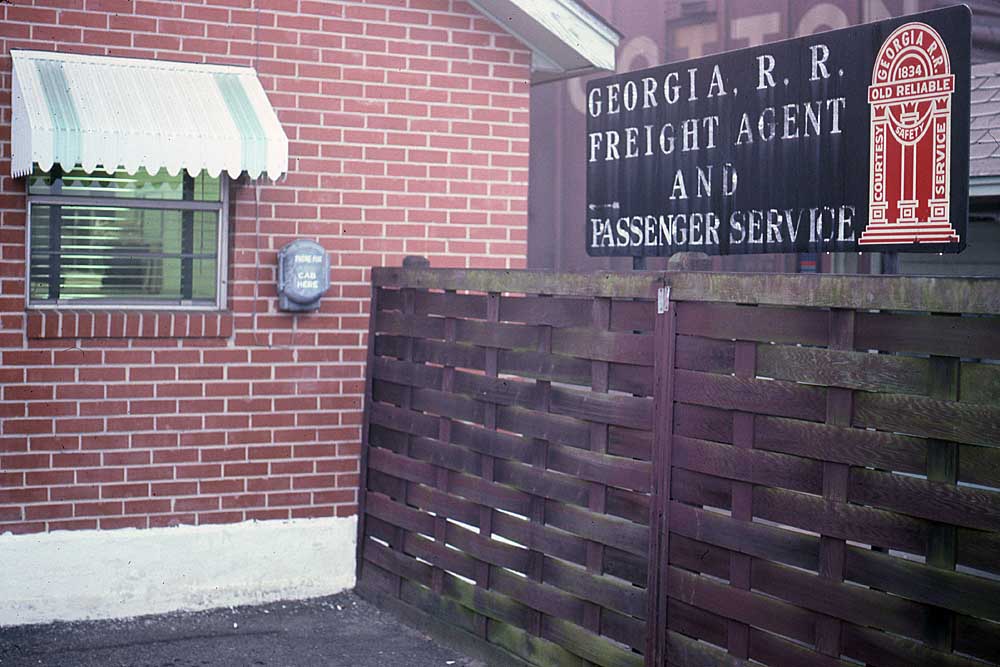
Wednesday morning was dawning clear but crisp as we left the motel, and our taxi driver had no trouble making the 7-mile trip to the Harrisonville Yard “passenger station” just as the sky was brightening. We paid $5.92 each for a one-way ticket to Atlanta and hung around the office until we were told to board. Neither Carol nor I can recall if we were driven to the coach or if it was spotted near the office, but I recall that the engines, with the coach, did some switching to get the train ready. My first photo of the day is out in the country on a curve, at an unknown time after our 8:28 a.m. departure.
Not having any idea what time of day we’d reach civilization (Atlanta) again, we’d reserved a room at an expensive downtown Marriott Hotel to be close to restaurants and a car-rental agency. Other fans’ tales of riding 103 reported Atlanta arrivals anytime from mid-afternoon to very late in the evening. Anticipating “roughing it,” we took snacks along, but the ride turned out to be relatively efficient.
We had a reason for riding westbound, not eastbound, and it was more than just ending up in a big city from where we could easily fly home. Georgia Road’s custom on these trains at the time was that westbound, the coach rode right behind the locomotives, while on the eastbound, it was at the rear of the train ahead of the caboose. Although Nos. 103 and 108 were the “hottest” through freights, they did make a few stops to switch. This meant that going east, whenever the train would stop to work, the coach would sit “out in the boonies” and passengers wouldn’t get to see any switching activity. Westbound, every time the diesels would uncouple from the freight cars, the coach would tag along, providing riders with a “front row seat.”
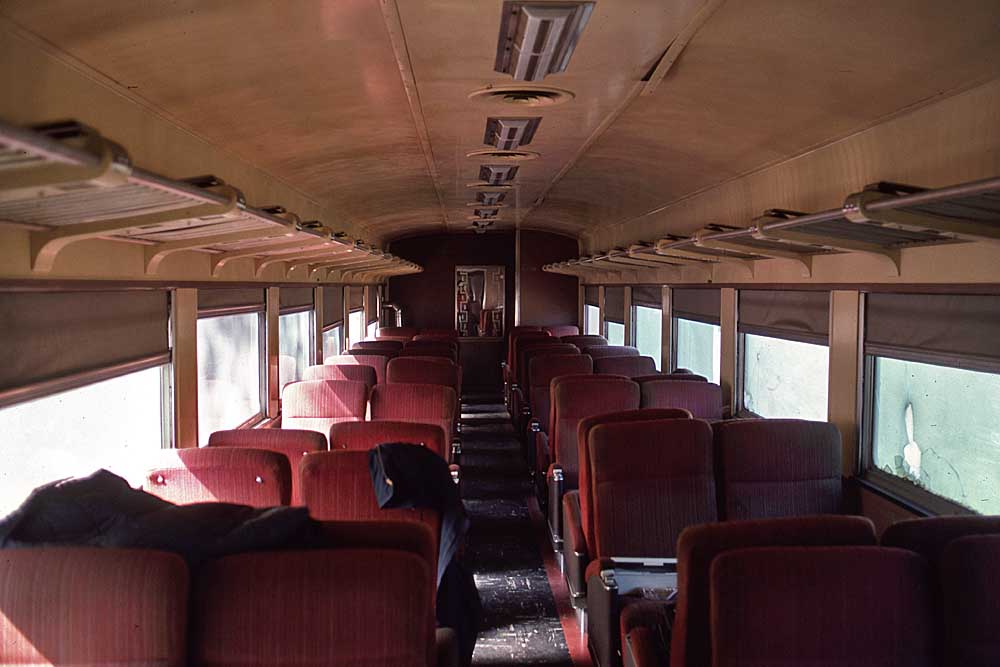
The interior of coach 120, Budd-built in 1953 for the New York-New Orleans Crescent Limited — which historically ran between Atlanta and the Crescent City via Montgomery, Ala., using the A&WP-WofA-L&N — was minimally functional. At the vestibule (rear) end was a restroom, which Carol recalls as “unusable,” which we’d anticipated. The seats were mostly facing each other in pairs. A gas heater had been installed at the rear end in place of the last two seats, and after we boarded, the conductor fired it up briefly to take the morning chill out of the air. About four rows’ worth of seats showed evidence of use, including the facing pair across from the heater, which served as the conductor’s “office.” We piled our bags and jackets on the next foursome and sat across the aisle, on the shady side. The cushions on the rest of the 54 seats were caked in dust, but a roll of paper towels was available, so we dry-swabbed the seats we’d sit in. Amazingly, a window here and there was almost clear enough to see through!
We recall the conductor as cordial but not talkative, though willing to answer questions and tolerating Dutch-door occupancy. He acknowledged that occasional kids’ groups on short rides and infrequent railfans were his only passengers on the Georgia Railroad mixed train. Out of Augusta, the coach was the first of 107 cars behind six diesels. Georgia and its West Point Route partners to Montgomery ran their road units in one pool, and our train 103’s sextet of five GP40s and one GP7, all in the (dirty) solid black of the era, was a typical mix: GA 753, A&WP 732, WofA 708 (its only GP40-2), A&WP 726, WofA 705, and A&WP 573.
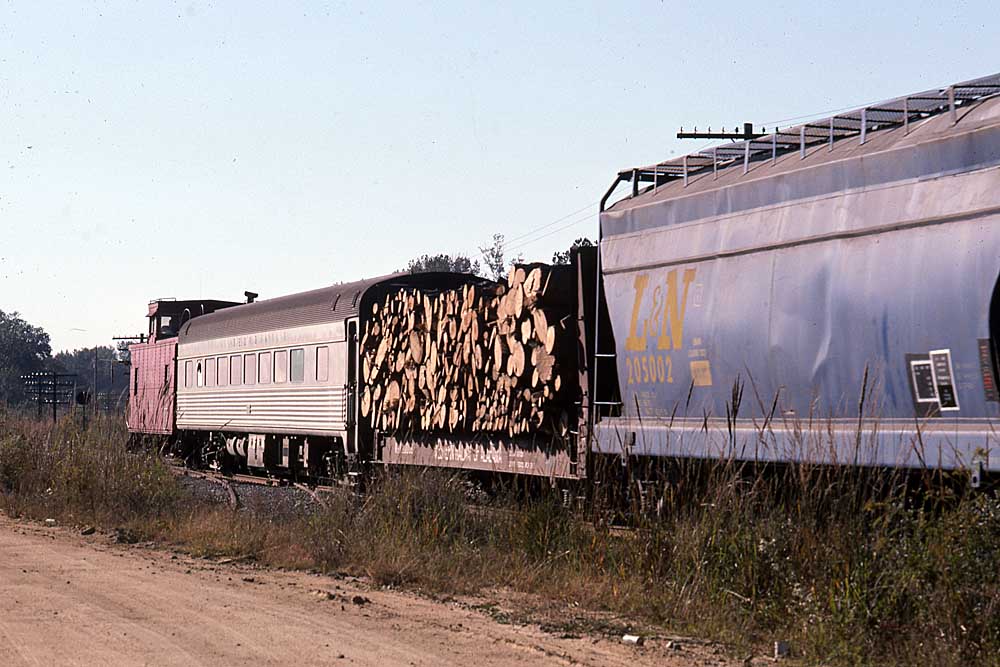
I expected our first stop for work to be Camak, but we highballed it, passing the depot and concrete coaling tower at 9:35. I was glad we’d stopped there briefly in the car the afternoon before, allowing me to absorb its typical backwoods small-town rail junction ambience at my own pace.
Our first work stop turned out to be Union Point, close to halfway to Atlanta at milepost 76, where we entered a siding south of the main track and pulled past the downtown business section, facing the tracks to the north. We would spend 45 minutes at this junction town, first crossing over and heading up the Athens branch to set out 17 cars and pick up 5. Our rear-facing vestibule provided that “front row perch” for all the action as I listened to the EMDs rev up and scale back, to the crash-bang-thunk-clank of slack action changing and couplings being made, and to the pop of brake hoses parting, as we moved back and forth.
Once we’d recoupled to our train, counterpart No. 108, with two GP40s and three GP7s (GA 751, GA 731, WofA 524, GA 1003, GA 1028), which had been waiting just west of the small brick depot office since we’d arrived, departed for points east. As its caboose passed us, I was startled to see two passenger cars ahead of it, undoubtedly coach 106 and one of the two sleepers kept as spares. Shortly after 108 cleared town, we also left, at 11:10 with 95 cars.
Social Circle was next, still 50 miles from Atlanta, but we were making unbelievably good (to me) time. We added 14 cars and after a 17-minute stop were under way again at 12:32 p.m. — two-thirds of the way to the end of the ride, and it was only lunchtime! Soon, I believe at Covington, we met an eastbound local freight, led by Georgia GP40 754.
Alas, Lithonia, 28 miles from Social Circle, put a slight dent in our speed performance. We took siding at 1:30 p.m. to meet WofA 707 East, a hefty train behind several units. It finally passed, picking up orders on the fly from the agent at the depot, a little after 2 p.m. We were not fully under way again, back on the main, until 2:20 p.m.
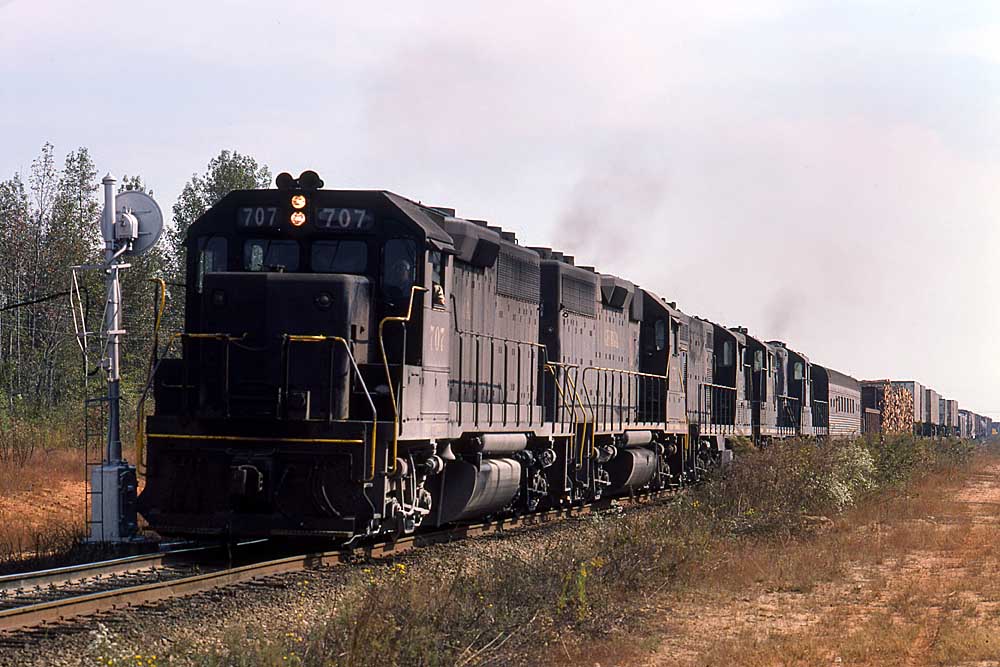
But this was the home stretch. We soon passed Stone Mountain, went by the Decatur depot at 3:05 p.m., and pulled alongside Hulsey Yard in Atlanta on the north track about 10 minutes later. The engineer spotted the 120’s vestibule perfectly at that narrow “boarding platform,” and with a nod of thanks to the conductor as we descended to the stepbox, our Georgia Railroad mixed train ride concluded at 3:20 p.m. I went forward for a shady-side shot of coach 120, and as the units revved up to back up in order to head into the yard, I snapped our first “front-end” photo of 753 and siblings. As normal when there were passengers on 103, the conductor had called a taxi for us, and within 15 minutes two disheveled but happy fans were checking in to the Marriott for a welcome shower. Having had enough railroading for the day, we just relaxed, then went out for dinner and watched Game 7 of the World Series before turning in.






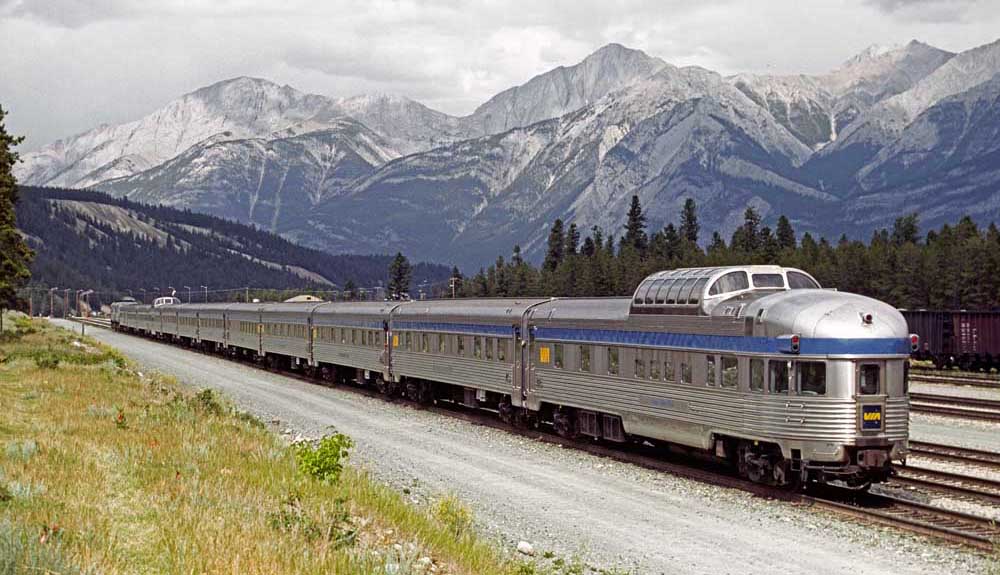
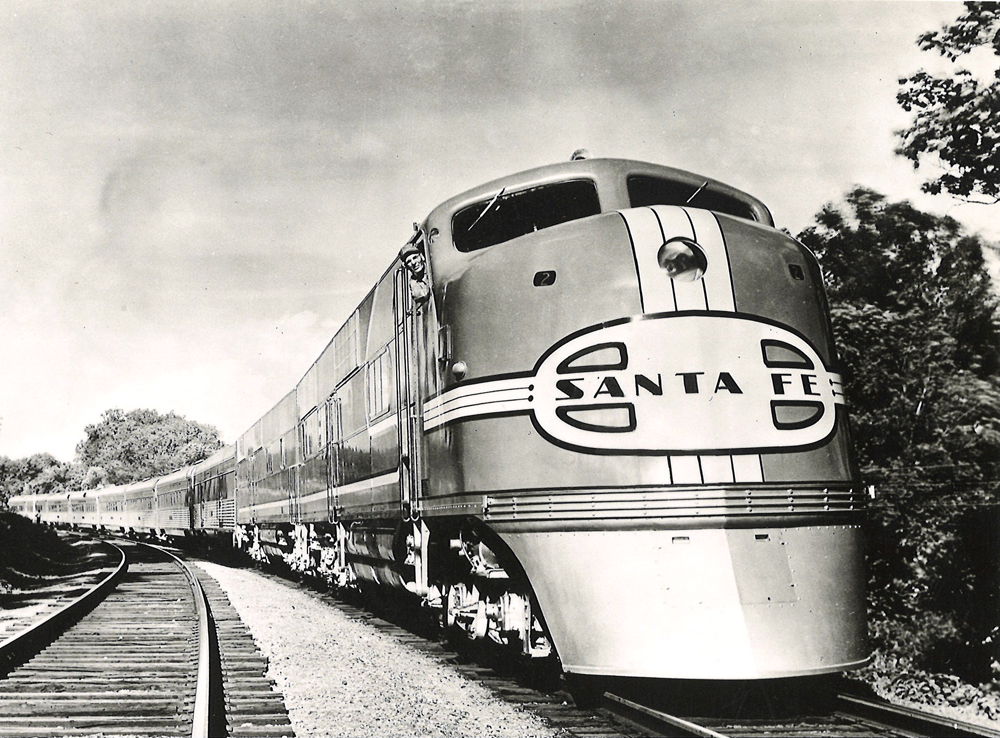
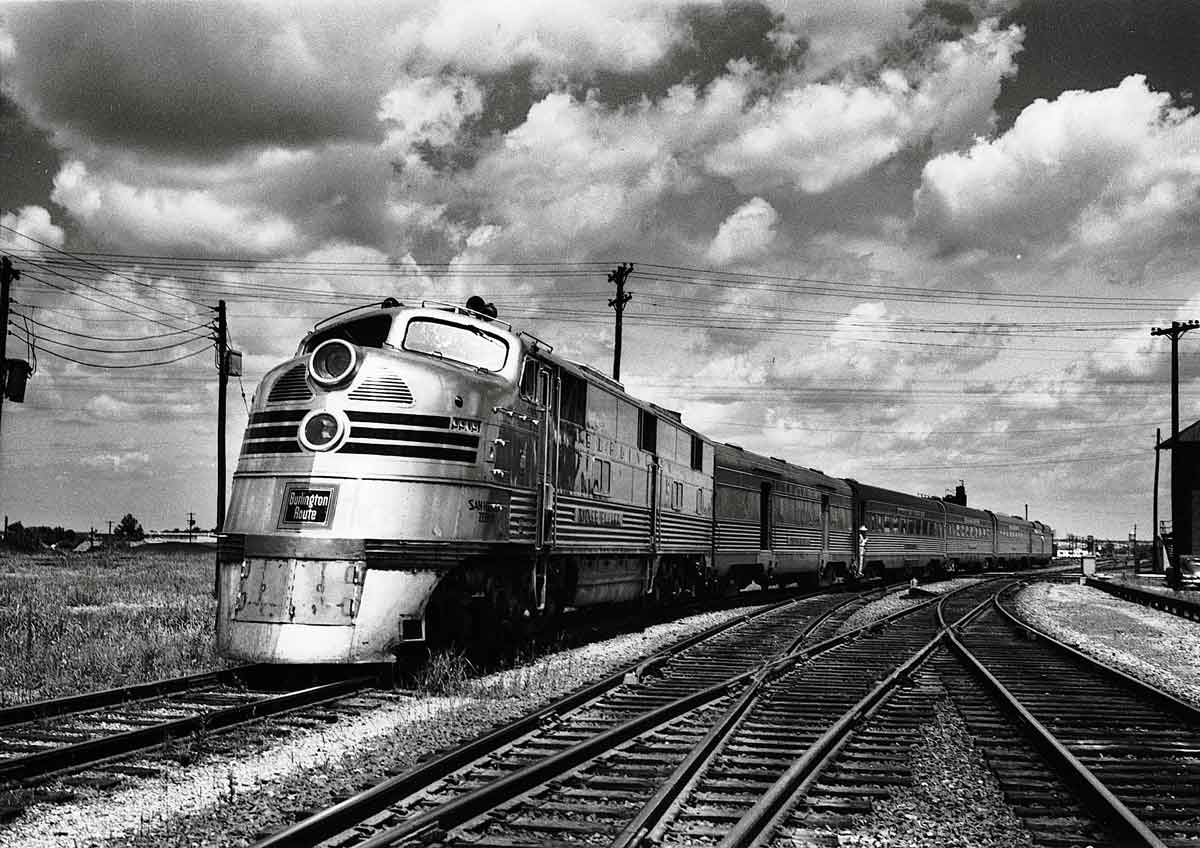
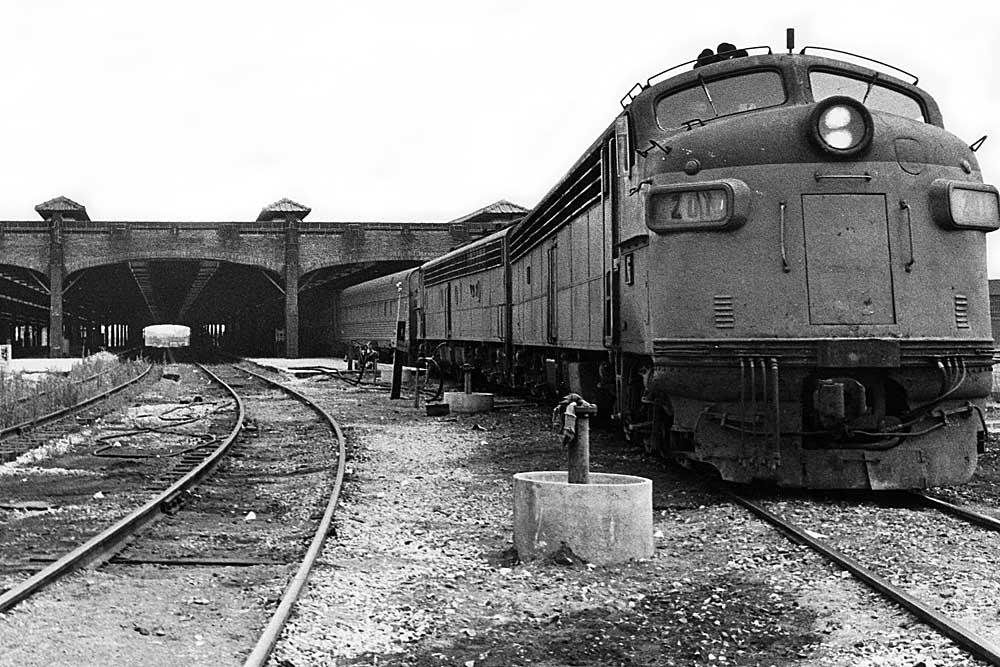




I remember reading this article as a boy. Great to read it again 48 years later!!
Was Georgia coach #120 a Jim Crow car? The photo shows a view down the aisle to a central partition, and then more seats beyond the partition. I’ve only seen that arrangement on Jim Crow cars, although (this being railroading) I’m sure there have been other uses for such a split seating arrangement.
Still have the cash fare receipt fm Atl to Union Point and return on 108 and 103, on 1/31/81 Fare 5.75 plus 18 cents tax. One of the Pullmans was on 108 and a bay window L&N caboose filled in for the return trip. Conductor obligingly stopped us near a beer store on the way back.
I do miss those trains. Always a chance for interesting memories when riding them. Thanks for re-sharing this story.